When you think of kettlebells, you probably think of mustachioed strongmen hefting giant metal balls over their heads. In reality, they actually didn’t originate as fitness equipment at all. Developed in Russia, the girya was used to weight crops.
As early as the 19th century, the girya made its way into athletics and recreation. Around the 20th century, the term “kettlebell” came into use.
The benefit of the kettlebell is simple: the center of gravity is off balance. While a dumbbell spreads it out, making it easy to keep level in your hand, the kettlebell’s weight is beyond your hand.
This forces you to incorporate more stabilizer muscles, and facilitates ballistic motions, like the iconic kettlebell swings.

Benefit of Kettlebell Training (Ballistics)
There are a lot of obvious benefits of typical kettlebell training. Explosive exercises get more of your body incorporated, they burn more calories, and they force you to stabilize with everything from your core to your wrists.
But there’s another, subtler benefit: less wear and tear on your body. That might seem counter-intuitive.
Yes, explosive movements can be very dangerous, but when done correctly, they can prevent some damage that “traditional”, slow weightlifting causes.
Imagine a bullet versus a missile.
A bullet is fired by one explosive force, and then it glides to the target on that momentum. A missile is launched, and most continue firing its propulsion system for the whole flight.
The bullet is a ballistic exercise. We’ll say a kettlebell swing. You exert one move of force from the hips, and momentum does the rest.
The missile is deadlifts, a slow movement that works the same muscles. You’re exerting force the whole path up, with a lot of stress going to your back.
While you can’t replicate the loads a deadlift can move with a kettlebell, it’s a safer alternative.
Full Body Kettlebell Routine
While the best use of kettlebells is to work exercises into your normal routine. Swings, cleans, bottoms up variations – all great moves to mix up your workout. However, some people want to stick with all kettlebells.
The main advantage of that is the ease with which you can switch between exercises. Set aside a few bells, and you can get a full workout in a 5×5 area. So here’s a circle to get your whole body working.
Renegade Rows with Pushup x 8
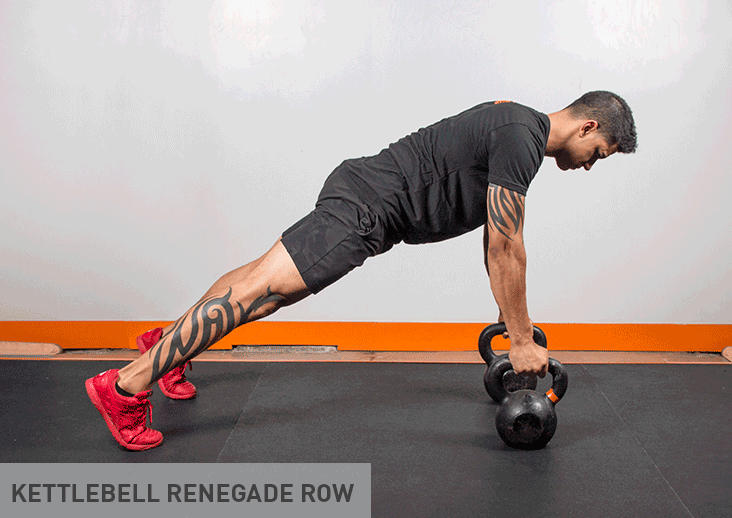
Note: Pick a light weight. This is a tough one.
Goblet Squats x 15
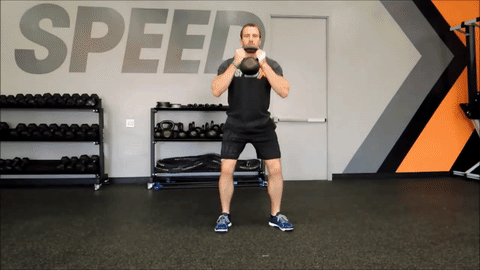
Note: This doesn’t fully take advantage of the kettlebell, but you can’t beat an old fashion squat.
Kettlebell Swings x 15
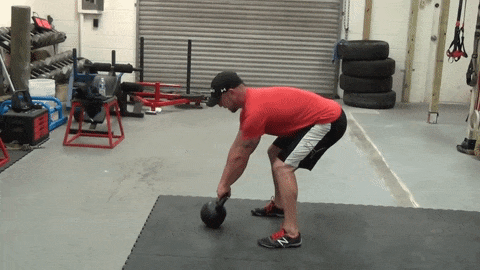
Note: If you can’t perform one of these properly, take a step back before tackling the rest of this workout.
Suitcase Carry X 100 feet per side, broken up however practical.

Note: If you don’t have the room for this, replace it with a stationary side bend. Not as good, but you’ll still hit the obliques.
Bottoms Up Clean and Press
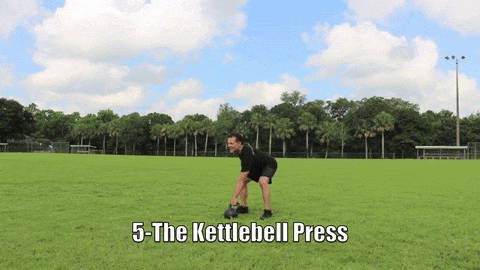
Note: For a kettlebell clean, think of it more as a swing up to your chest. You have to bend your arm, but make sure you don’t use your biceps to get it up. And yes, the press has to be bottoms up as well.
Kettlebell Row
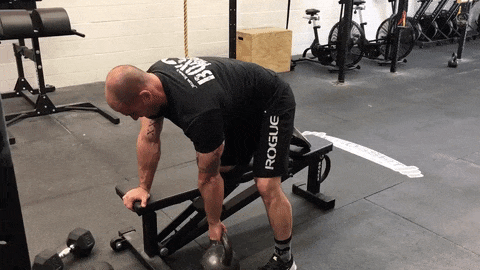
Note: This is just a normal row, but with kettlebells. Keep it simple.
You might be thinking that this doesn’t really look like a “kettlebell workout,” but more of a normal workout with the dumbbells swapped for kettles. That’s exactly why working kettlebell moves into your normal routine is better for beginners.
Once you get deep into the kettlebell life, you’ll find all sorts of complicated exercises to work everything. But for beginners, you’re a little limited. But if you have limited space or equipment (or time) this is a perfect workout for anyone.